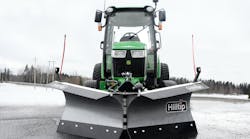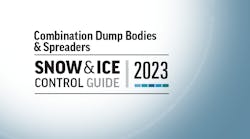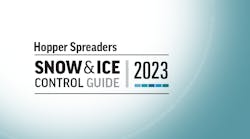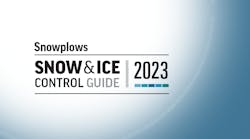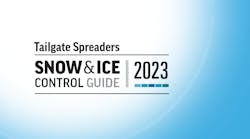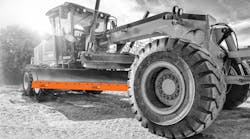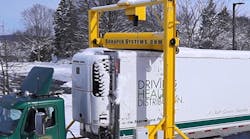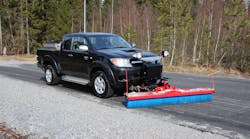AS the outside temperature drops, it's time to start thinking about snow and ice equipment and the increased revenue it can provide your business. Many truck equipment distributors have done well from fitting plows and spreaders on trucks, but in this economy we're forced to look past the obvious and find new ways to make money. Fortunately, there are new trends in snow and ice equipment that come with a nice profit potential.
In addition to standard snowplows and spreaders, a variety of peripheral products have been introduced recently to work with this equipment. These include sprayers, broom attachments and job-tracking devices. Not only do these add-ons help end-users become more productive, but they also provide extra revenue and quick throughput.
Profitable solutions
The first equipment trend that distributors can take advantage of is the demand for sprayers in the private sector. Distributors have been selling sprayers to municipalities for years, private contractors have largely been ignored. However, recent salt shortages have caused contractors to become interested in sprayers. As the demand for this equipment increases, so does the quality and technology behind the products.
Sprayers fall into three categories: pre-wetting, anti-icing and de-icing. They handle the same brine solutions, but differ in how they apply the liquid. Pre-wetting involves spraying salt before it is spread - therefore speeding the melting process and reducing the amount of salt needed to treat an area. During anti-icing, liquid is sprayed directly to the ground before a storm hits in order to prevent a bond from forming between the ice and pavement. Lastly, de-icing is the practice of spraying brine on the ground to melt ice after it has formed.
The newest pre-wetting sprayers, are designed to mount next to V-box spreaders on truck beds. They apply brine just before the salt hits the spinner. Some of sprayer controllers plug directly into the spreader's controller to electronically calibrate the ideal amount of solution to spray according to the feed rate.
While pre-wetting sprayers are a supplemental product to spreaders, de-icing sprayers are stand-alone pieces of equipment. Both types of sprayers, however, can sometimes be used to also perform anti-icing applications.
New sales push
One product that's sweeping across the nation literally — is snowbrooms. These products have grown in popularity as contractors explore new ways to prevent damage to decorative concretes and permeable pavements, as well as sprinkler heads positioned near service areas. In turn, manufacturers have stayed on top of this trend by developing snowbrooms, which are capable of pushing light snow and slush without damaging sensitive surfaces.
Generally, snowbrooms replace the moldboard of a standard snowplow and use the existing mount and hydraulics. Fabrication is usually required to install this equipment, but any distributor can quickly get the truck in and out of the shop for this work.
Keeping track of time
The third type of product actually sits inside the cab — job-tracking devices.
Traditionally, contractors documented their plowing and spreading applications by simply writing everything down while on the jobsite. This information was used for billing clients and reducing a contractor's liability in slip-and-fall lawsuits. However, the process of writing down the information was inefficient, and a scribbled note on a scrap of paper lacks professionalism and doesn't hold high credibility when challenged with a slip-and-call claim in a court of law.
Recently, electronics have been replacing the pen and paper. Now, a job-tracking device can be mounted in the cab, and the operator simply pushes buttons as he starts and stops jobs. The device records the time spent on each job, and the information can be uploaded as a spreadsheet to a computer at the end of the day.
Distributors also can benefit from such job-tracking technology because the devices are typically sold separately from spreaders, allowing distributors to generate additional sales.
Another way for contractors and municipalities to measure their jobs is to mount camera systems on their trucks. The cameras can be used to aid in backing up a truck, monitoring an application or even providing documentation of the work that was done on an account. This practice has been used by snow and ice professionals for years, but manufacturers are now starting to develop more specialized systems that distributors can install.
Peripheral equipment won't become the biggest money-maker in your operation. But one of the benefits is how easily these products can supplement the sale of plows and spreaders. Consider them as icing on the cake…or padding to your bottom line.
